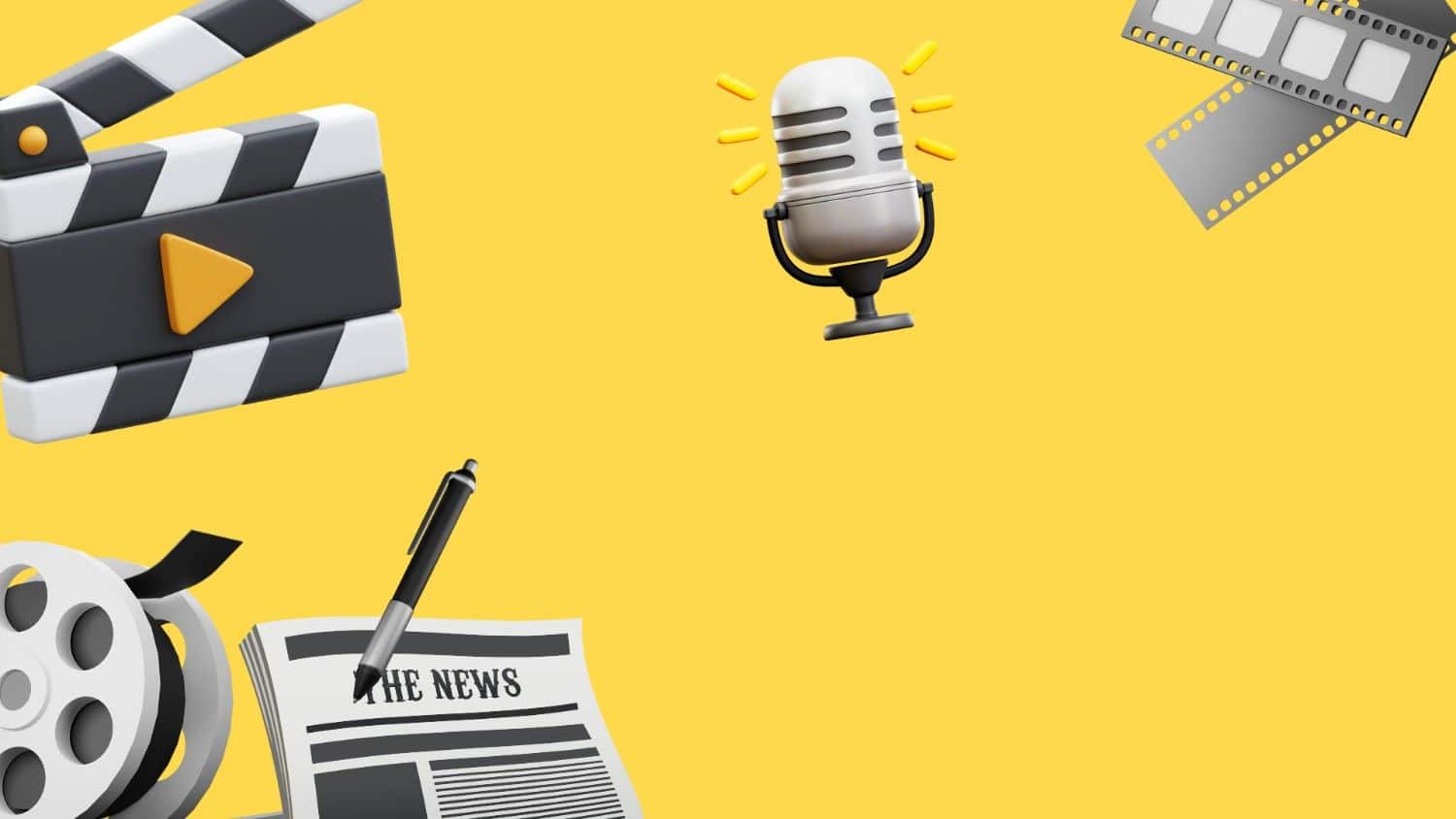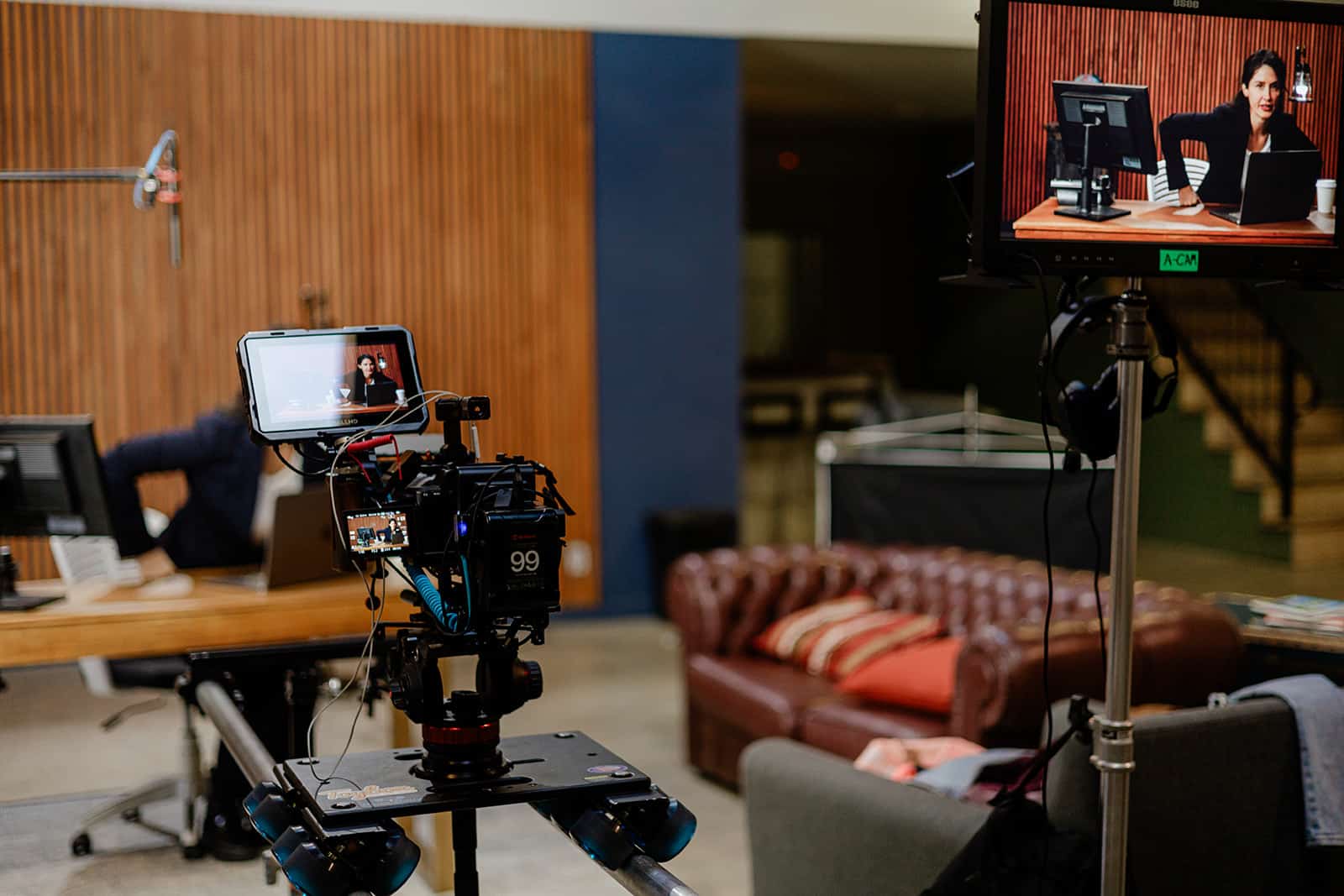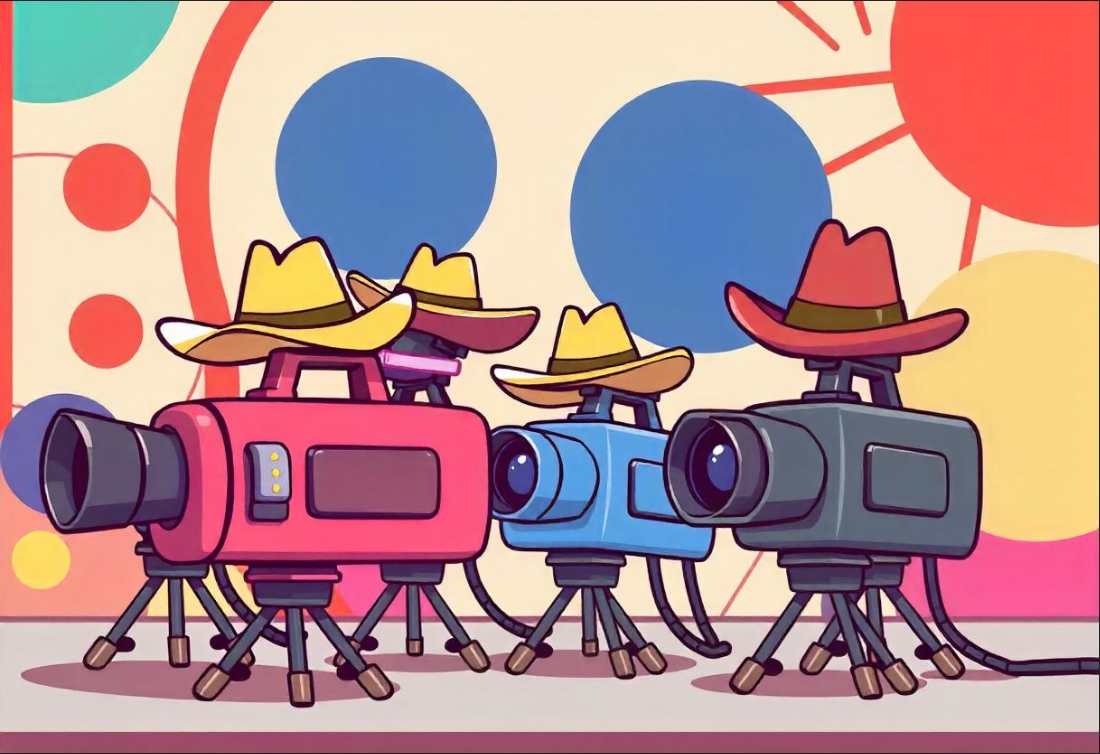What if video marketing could do more than just get views?
We are talking about conversion and money here.
What actually made those videos go viral turned every second into a penny. There are amazing video marketing case studies that can help you make calculated decisions.
Well, it’s a behind-the-scenes journey of branded video strategy, creativity, visual storytelling performance, and smart execution that came together to transform views into tangible results.
This is how video marketing gets a full-blown success story:
- Identify the problem, audience, and SMART goals before crafting any content.
- Use detailed storyboarding to guide scripting, casting, and production decisions.
- Focus on strong hooks, crisp edits, sound design, and clear CTAs.
- Promote and optimize content for each platform, blending paid with organic reach.
- Track watch time, CTR, conversions; continuously A/B test to boost ROI.
Why Video Marketing Works? – All Began with the Concept
Every great video marketing campaign starts with a concept. Video takes up the idea. Not any idea, a clear and creative idea with Performance marketing criteria. This idea requires an understanding of the problem, the people involved, and its purpose.
Before doing storyboards or cameras, the brand stepped back to get the basics right. Here’s how the concept phase unfolded:
Understanding the Digital Engagement Problem
The brand wasn’t just trying to “make a video.” They actually had to know about the pain points.
- Website traffic is doing alright, but conversions were lagging for some reason
- Product awareness was already built; however, the trust and clarity were still missing
- Customers were walking out at the decision stage
- Visual content effectiveness is close to none
Knowing the Audience: Behavioral Targeting with Visual Media
Instead of guessing, they leaned into real insights:
- Got into customer support queries to find out the common hesitations
- Checking up on the audience to see their behaviour on landing pages
- Sketch out the buyer persona and find their specific pain points and motivators
Setting SMART Goals (because vague hopes don’t convert)
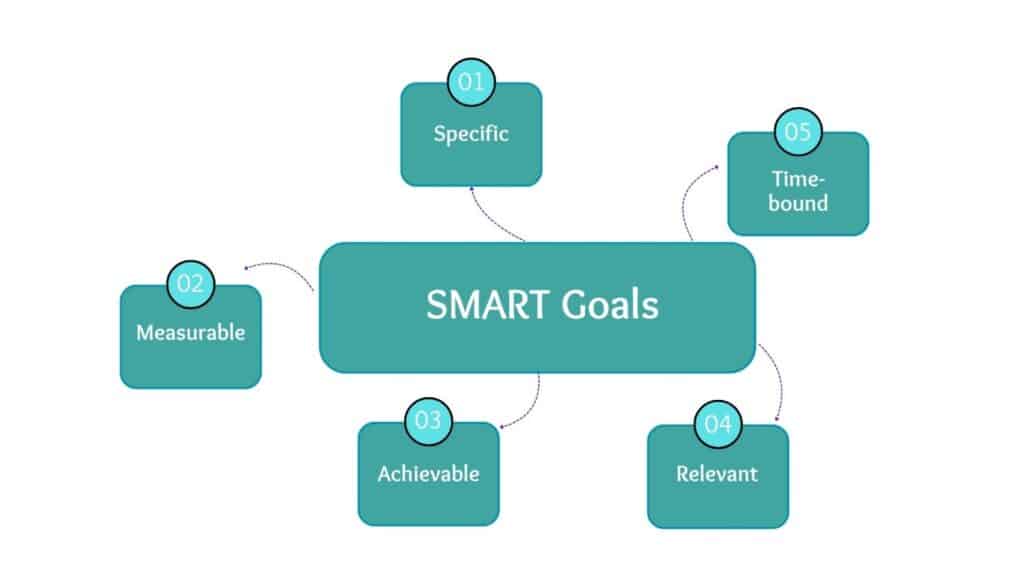
The team didn’t aim to just “increase sales.” They aimed for precision:
- Specific: Boost conversions on the product landing page
- Measurable: Increase sign-ups by 25% in 3 months
- Achievable: Based on previous marketing trends
- Relevant: Tied directly to quarterly growth goals
- Time-bound: Campaign to run for 90 days
Check out The Ultimate Guide to E-commerce Video Marketing in 2025
Strategic Planning & Storyboarding
Are you done with the concept? Now, move on to the next step, which is the route to execution.
You won’t randomly “make the video” here. It is about making the right video for the right audience on the right platform.
For that, you need a strategy plan.
Platform Choice & Audience Profiling
Before pressing record, the team had to answer the following questions: Where will this video live, and who are we talking to?
Here’s how they approached it:
- Platform matters: They chose Instagram Reels and YouTube as the primary channels. Why?
- Reels: Bite-sized, attention-grabbing, and shareable. Perfect for awareness.
- YouTube: Better for longer-form storytelling and building trust.
- Audience segmentation:
- On Instagram: Younger, discovery-mode users who scroll fast.
- On YouTube: Slightly older, more intent-driven viewers who search before buying.
- Tone & length were adjusted accordingly
- Reels: Grab the audience in the first 3 sec. The total run time will be < 30s
- YouTube: Stick to 60-90 seconds. It will be informative but still engaging.
Storyboard Structure & Roles
Now, the main part of the video. Storyboarding! This phase turned ideas into a visual plan.
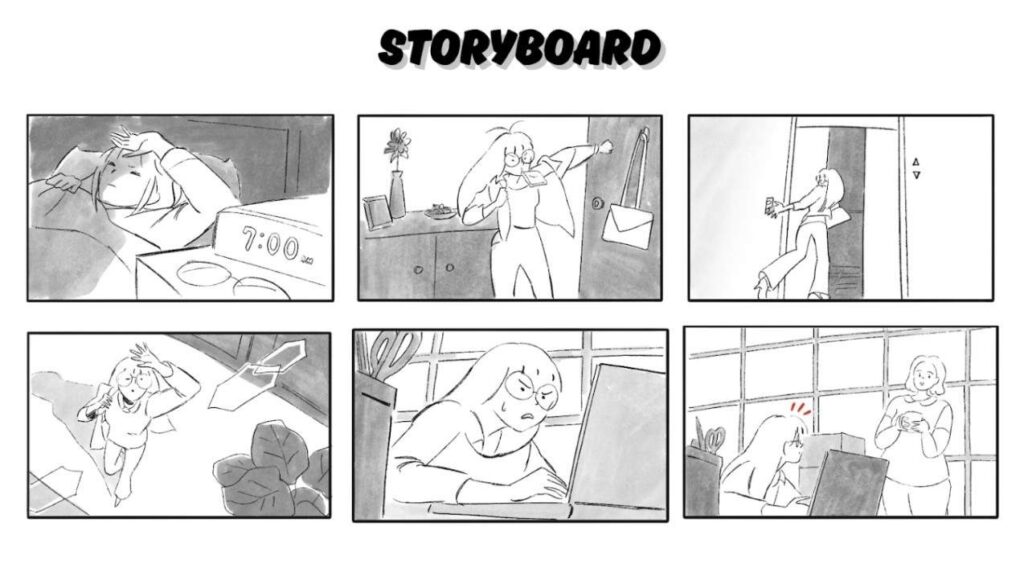
The storyboard included:
- Scene-by-scene layout: Visual sketches or mockups for each shot
- Script: Narration, dialogue, CTA
- Cast/Voiceover: Based on audience relatability
- Production plan: Camera angles, props, shooting schedule
- Post-production: Editing, music, captions, motion graphics
Team roles defined:
- Creative lead: Guided tone, style, and pacing
- Scriptwriter: Translated the message into natural storytelling
- Director/Producer: Managed shooting logistics and performance
- Editor: Polished the footage into a final, platform-ready cut
Relatable reads: How to Storyboard? – Step-By-Step Ultimate Guide for 2025 – LocalEyes
Case Study: Dove’s “Real Beauty Sketches” (2013)
1. Platform Choice & Audience Profiling
- Dove released its video across 46 YouTube channels in 25 languages. They target Women in markets like the U.S., Canada, Brazil, and Australia.
- The audience consisted of women concerned about self-image, seeking authenticity and emotional resonance.
2. Storyboard Structure & Roles
- Scenes:
- Introduction: Women self-describe to a forensic sketch artist.
- Comparison: A stranger’s description of the woman leads to different sketches.
- Reveal & Reflection: Comparison highlighting the gap between self-perception and external perception.
- Script and Narration: Voiceover guided the viewer, prompting emotional engagement.
- Roles:
- Creative Lead & Agency (Ogilvy): Developed the emotional narrative.
- Producer/Director: Oversaw execution (director John X. Carey).
- Sketch Artist: Gil Zamora, an expert ensuring authenticity
- Editor/Post-production: Polished pacing, transitions, and music for impact.
3. Why It Worked
- Emotional storytelling
- Strategic pacing
- Clean, purposeful storyboard
- Global rollout with localization
Production & Execution
Time to make the strategy come alive on the screen. Before that, you will need to shoot the story that will show on the screen.
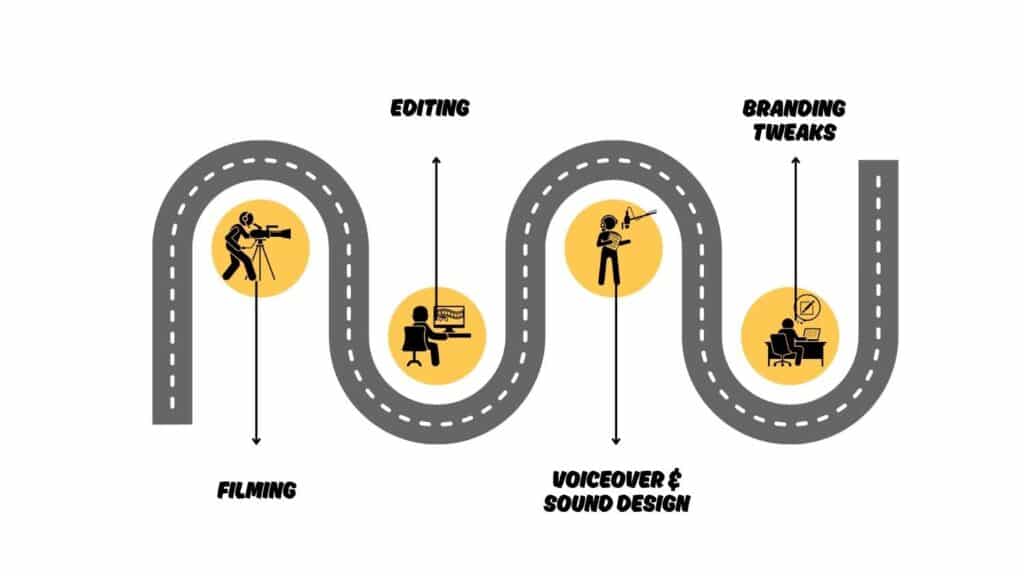
1. Filming
- Set up scenes based on storyboard shots and angles.
- Capture multiple takes (wide, medium, close-up) with consistent lighting/continuity.
- Record voiceover sessions if done alongside or pre-filming.
2. Editing
- Assemble the footage into a rough cut.
- Trim and sequence shots to maintain flow.
- Adjust the pacing to match the storyboard and hook structure.
3. Voiceover & Sound Design
- Record a professional voiceover to match the timing and emotion.
- Layer ambient sounds, sound effects, and music to enhance mood and drive action.
4. Branding Tweaks
- Insert logo and brand colors/graphics subtly.
- Add CTAs perfectly.
- Match the end screens and lower-thirds with the brand style guide.
- Optimize durations and aspect ratios based on the platform.
Pro Tips for Production
- Keep it short: On social media, try to keep the lengths at 30–60 seconds. YouTube reels can be around 60–90 seconds.
- Hook within 5 seconds: Start off with a catchy visual. Throw a question or a bold statement to get the audience’s attention.
- Strategic CTA placement: Place your call to action twice. First CTA will go after 70% of the video, and place another at the very end.
- Consistent audio levels: Check if the voice-over is clear. The music and sound effects should be equal across devices and platforms.
Find out the Top 20 Video Production Companies in Miami – LocalEyes
Case Study: Honda’s “Cog” (2003)
This famous Honda advertisement brought all production phases together beautifully:
1. Filming
- Set up a giant Rube Goldberg chain using various car parts.
- Filmed meticulously in sequence, many takes were required to achieve perfect chain reactions.
2. Editing
- Over 606 takes, the team selected the best single uninterrupted sequence.
- Maintained precise pacing to build suspense, leading up to the final payoff shot.
3. Sound Design & Voiceover
- Synchronized audio cues (clinks, rolls, impacts) with visuals to enhance realism.
- A concise voiceover, “Isn’t it nice when things just work?” is placed at the end.
4. Branding
- The logo and tagline appeared at the end after the hook delivered its visual payoff.
- Perfect CTA timing: the payoff came around 120 seconds in, then the brand closed the loop.
Why It Worked
- Hook & suspense: The unusual chain-reaction sequence kept viewers watching.
- Pacing & editing: Each piece had purposeful timing.
- Immersive sound: Physical noises reinforced the tactile nature of the product.
- Elegant CTA: The voiceover reinforced the brand’s promise and closed with clarity.
- Tight production: Months of planning and precision ensured a flawless final product
Launch Plan & Promotion
Promoting and launching the video has the upper hand in making it viral. Even if you’ve got an amazing video ready to roll, if you don’t promote it the right way, it’ll likely flop.
Platform and Format Selection
- YouTube: Recording long content? Post it on YouTube with titles, thumbnails, and transcripts.
- TikTok/Reels: Short and catchy videos? Share it on TikTok under 60 seconds for quick engagement.
- LinkedIn: Wants a set professional look? Upload the video on LinkedIn for thought-leadership content or B2B value.
- Cross-channel Formatting:
- Format: Upload the video in vertical (9:16) for TikTok, square, or horizontal for YouTube.
- Length: sub-60 s for TikTok, 60–90 s for YouTube.
SEO Tuning and On-Platform Optimization
- Arrange the titles with strategic keywords.
- Come up with Thumbnails that look bold. The visuals need to have contrast with clear text overlays.
- Captions and transcripts:
- Don’t forget to add closed captions.
- Use transcripts in descriptions to improve discoverability.
- Long descriptions: Description will be full of keywords, links, and CTA
Paid and Organic Amplification
- Organic strategies:
- Share video across email newsletters, blog posts, and social media.
- Bring the audience together by asking questions or posting a community post.
- Get in touch with influencers or micro-creators to share your posts.
- Paid strategies:
- YouTube shorts ads show up on the screen of specific demographics/interests.
- Use performance data to iterate. So, optimize headlines, budgets, and targeting.
Check out Video Seeding: 10 Powerful Distribution Techniques You Should Try – LocalEyes
Case Study: Crumbl (Weekly Flavours)
Promotion Highlights:
- 4–6 new rotating flavors every single week.
- 10M+ TikTok followers
- Hit 100K–350K views per video
Platform Choices:
- YouTube and TikTok Shorts for mass awareness
- Hashtag for powerfully raised visibility
- Crumbl reposts top UGC
Why it worked:
- Weekly limited flavors
- Same video on TikTok & Shorts
- Free and trustworthy content
- Massive cross-platform reach
- Blended organic creativity over paid spend
Go from Views to Conversions with LocalEyes
We, LocalEyes, are all about helping brands turn their views into real sales. Our solid team creates stories through video, connecting with audiences meaningfully.
We ensure your videos don’t just get likes; they actually lead to purchases.
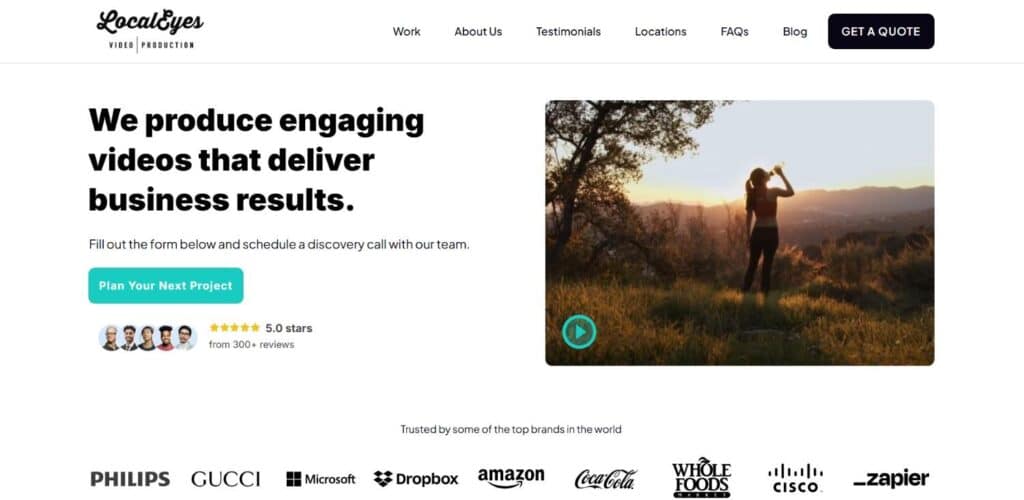
[Join us 👉https://localeyesit.com/]
What Worked For Us
- High initial reach drove massive exposure.
- Optimized thumbnails and titles boosted CTR by engaging clicks.
- Strong retention through honest storytelling delivered longer watch times.
What We Pivoted
- Added video testimonials to foster trust.
- Refined mid-roll CTAs for better timing in the action flow.
- Video elements based on platform analytics.
What We Improved
- Introduced shorter clips for social ads.
- Enhanced SEO via captions, transcripts, and keyword-rich descriptions.
Why This Approach Worked
1. Real Voices Build Trust
Hearing real users speak candidly validated the product, resonating more than branded scripting.
2. Data-Led Optimization
Analytics guided meaningful tweaks. It can be CTAs, thumbnails, retention-charged testimonial segments.
3. Retention Drives Conversions
Longer watch times meant more exposure to persuasive messaging, which drove higher CTRs and conversions.
4. Efficient Repurposing
Cutting the high-performance long-form videos in half. These short videos can be posted on Instagram, TikTok, and YouTube ads.
ROI Optimization & Next Steps
Once a video campaign goes live, the real work begins. ROI isn’t just about one-time performance; it’s about learning and scaling what works.
A/B Testing
1. Thumbnails
- Tested: Faces vs. product images, bold vs. soft colors, text overlay vs. clean visuals
- Why it matters: Thumbnails are the first impression.
2. Call-to-Action (CTA)
- Tested: CTA at 25 sec vs. 60 sec, “Learn More” vs. “Get Started”
- Result: CTAs placed earlier and repeated near the end performed better
3. Script Adjustments
- Tested: Problem-first intro vs. benefit-first
- Observation: Problem-first storytelling improved engagement and watch time.
Relatable Reads: How to Track & Measure ROI on Video Marketing Campaigns? – LocalEyes
Frequently Asked Questions: Video Marketing Case Study
What is a success story in business?
A success story showcases how a business overcame challenges, achieved goals, or delivered results.
How to plan a video campaign?
Start by defining your goal. Know your audience, choose the right platform, write a clear script, storyboard scenes, schedule production, optimize for SEO, and plan promotion.
How do you measure the success of a video?
Track metrics like views, watch time, engagement (likes/comments), click-through rate (CTR), and conversion rate.
What are the qualities of a good video?
A clear message, strong hook, engaging visuals, crisp audio, emotional appeal, optimized length, platform relevance, and a compelling call to action (CTA) all contribute to a high-performing video.

Founder at LocalEyes Video Production | Inc. 5000 CEO | Emmy Award Winning Producer

